Pressurized Water Reactor (PWR):Features of the LWR Plant
Features of the LWR Plant
Nuclear power generation makes use of energy generated by the nuclear fission.
Massive energy is generated when the atom fissions.Nuclear power generation converts the energy generated by continuous fissions into electric energy.
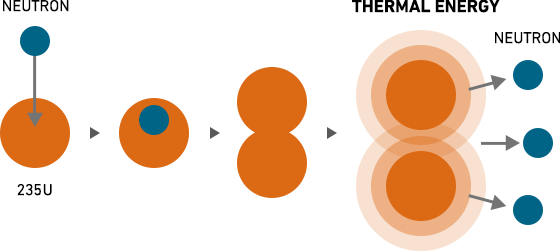
What is Pressurized Water Reactor?
A pressurized water reactor(PWR) is a type of light water reactor that uses ordinary water as the moderator and coolant. The PWR plant is the most common type of nuclear power reactor in the world. A PWR has two water systems. One is called the reactor(primary) system that retrieves heat generated in the reactor, and the other is called the turbine(secondary) system that produces electric power with steam generated by that heat. About 160 atm of pressure is applied on the primary system to prevent the primary cooling water with high temperature from boiling. This heat is transferred, through the steam generator, to the secondary system water to generate steam, and eventually to rotate the turbine to generate electric power. As the primary and secondary systems are separated, secondary steam through the turbine is not contaminated with radioactive materials.
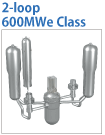
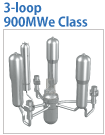
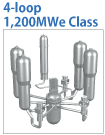
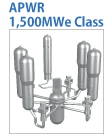
Features of the PWR Nuclear Power Plant
The basic design concept of the PWR nuclear power plant is simple: pressurized water is used as the reactor coolant and the reactor and turbine systems are separated by steam generators to constitute an indirect cycle system. The outstanding features of this system are shown in the following:
- The higher moderator density makes it possible to minimize the fuel rod pitch and enable a compact reactor core design.
- The absence of bulk boiling in the core limits cladding corrosion and thereby increases the fuel reliability.
- The open-lattice fuel assembly design contributes to the economical use of neutrons and results in excellent fuel economy.
- The self-control mechanisms are inherent, and a safe shutdown capability is ensured by gravity insertion of control rods in an emergency.
- The plant generates an extremely low quantity of radioactive substance.
- The reactor and turbine systems are separated by steam generators; therefore, the turbine system design of the combustion power plant grade is feasible and thereby it can be easily operated and maintained.
- The core cooling with heat-removal capability of the secondary system ensures inherent reactor safety in an emergency.
- The lower center-of-gravity plant design favors seismic resistance.
As shown above, since the PWR nuclear power plant enables to design its facilities compactly as a whole plant and provides superior fuel economy, thus enables to sufficiently respond to any needs of nuclear power plants such as inexpensive generation root and excellent operability.


